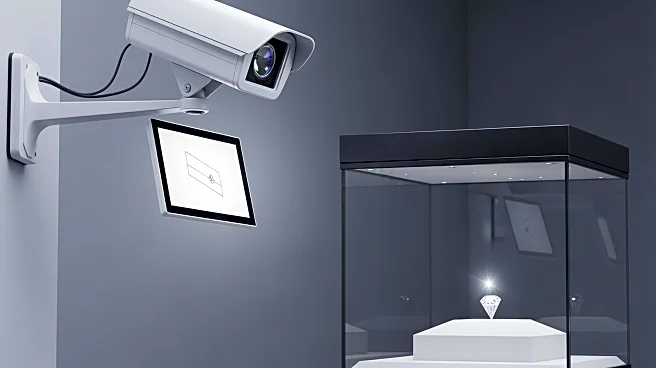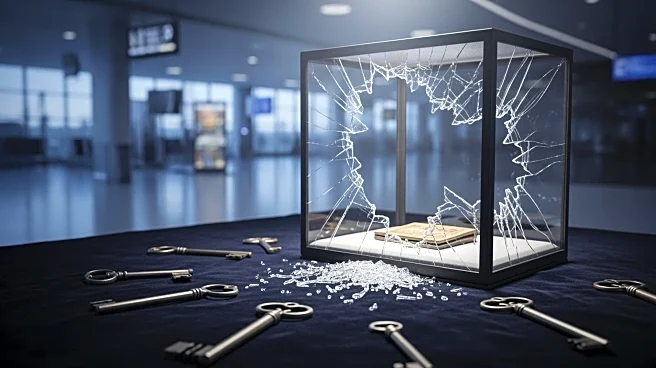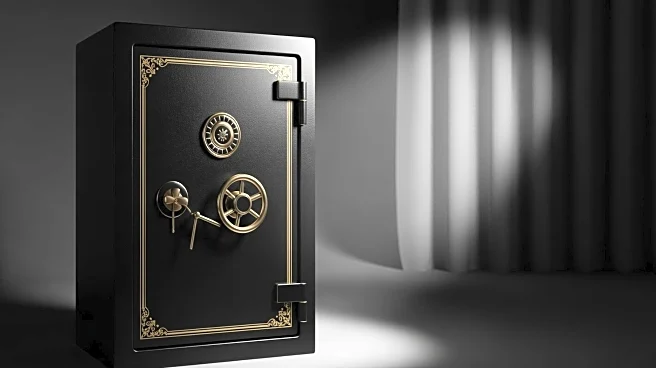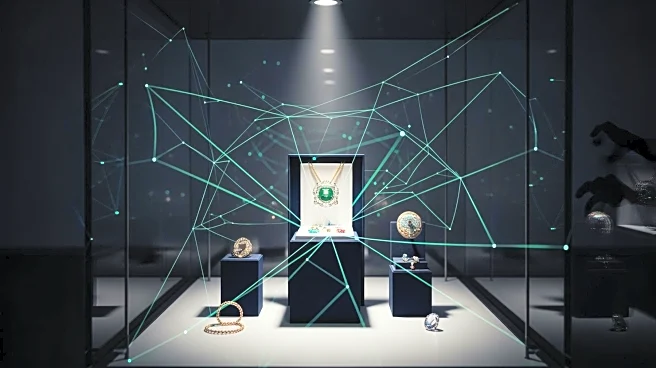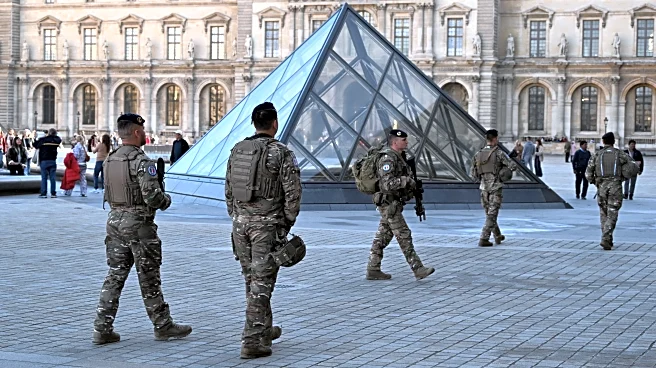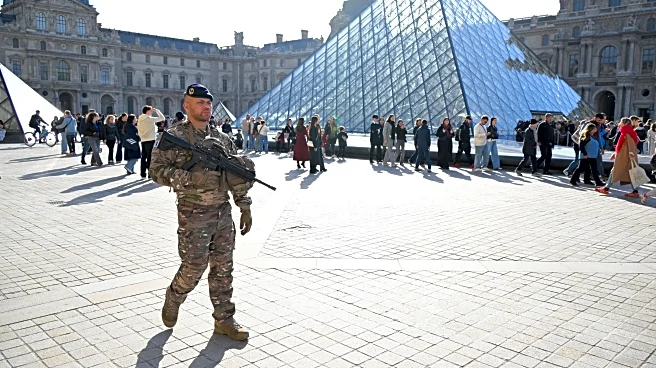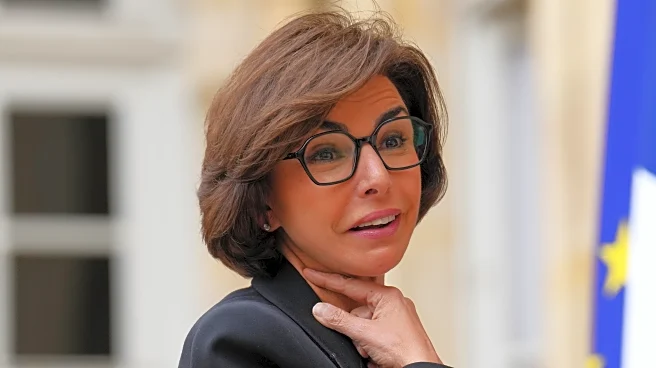What's Happening?
The Louvre Museum in Paris recently experienced a significant security breach when thieves stole jewels valued at approximately $102 million. The heist, which occurred on October 19, involved the use of
a freight lift to access the museum and break into display cases within minutes. Despite the arrest of several suspects, the stolen items remain missing. The incident has sparked a debate over the museum's security measures, with critics pointing to a shift in focus towards enhancing visitor experiences at the expense of security. Former French culture minister Aurélie Filippetti highlighted this shift, noting that while it has increased visitor engagement, it has also left the museum vulnerable to such incidents.
Why It's Important?
This event underscores the challenges faced by cultural institutions in balancing security with visitor engagement. The Louvre, like many museums, is tasked with safeguarding priceless artifacts while also providing access to millions of visitors annually. The heist has raised concerns about the adequacy of current security protocols, particularly in light of budget constraints and the prioritization of visitor experience. The incident could prompt a reevaluation of security strategies in museums worldwide, potentially leading to increased investment in security technologies and personnel training to prevent future occurrences.
What's Next?
As investigations continue, the focus will likely remain on recovering the stolen jewels and apprehending any remaining suspects. The Louvre may also face pressure to review and enhance its security measures, possibly leading to policy changes that could affect how museums globally approach security. Additionally, the incident may influence public and governmental expectations regarding the protection of cultural heritage, potentially resulting in increased funding or regulatory changes.
Beyond the Headlines
The heist highlights a broader issue within the museum sector: the tension between accessibility and security. As museums strive to attract more visitors, they must also contend with the risk of theft and vandalism. This incident may prompt a deeper examination of how museums can effectively balance these competing priorities, ensuring that cultural treasures are both accessible and protected.
